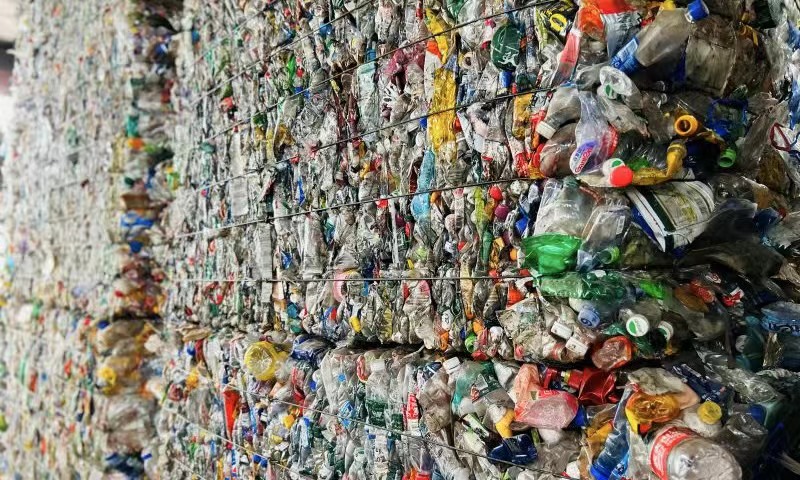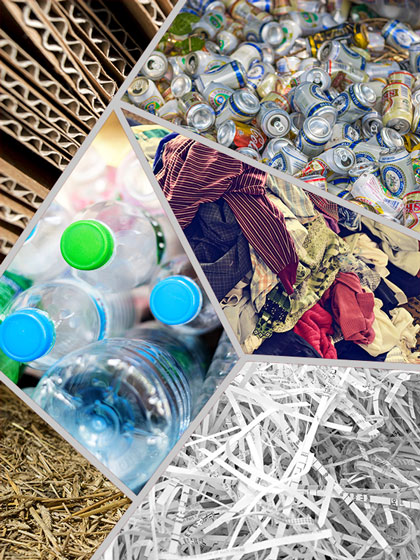
Are you tired of dealing with the hassle of disposing of empty PET bottles and containers? Well, worry no more! Makabale is here to rescue you from the madness with our ultimate guide of PET balers. We will walk you through everything you need to know about the PET bottle baling machine - from choosing the right one for your baling needs, to operating and maintaining it properly. So, let’s keep reading.
Choosing the Right PET Baler
Choosing the right PET baler is the first step towards an efficient and streamlined recycling process. But what exactly is a PET baler? It’s a machine efficiently compresses used PET bottles and containers into compact cubic bales, making it easier for you to manage, store, and transport them. PET bottle baling machines come in different types, various sizes and capacities. In addition, PET baler does not mean it can only bale PET bottles and containers, but it can also bale HDPE containers and Tetra Pak containers as well.
Types of PET Balers
Generally, they have two types:
- Vertical Balers: Ideal for small to medium-scale operations.
- Horizontal Balers: Suitable for larger quantities and high-volume recycling.
So, when picking a PET baler, it is very important to assess your needs first.
Factors to Consider
- Capacity and Throughput Requirements: you should think about the volume of PET bottles you need to handle daily or monthly. Because this will affect you to choose which type and which model of the plastic bottle press machine. You don't want to end up with a baler that's too small or too large for your requirements. It's like buying a pair of shoes that don't fit – uncomfortable and ineffective!
- Available Space and Installation Requirements: you will also need to consider how big of available space for placing and operating the baler.
- Energy Efficiency and Power Consumption: you need to check what your power supply is in the facility where you plan to install the baler machine. And check the electric systems. Makabale will inform you of the motor power of the baler you purchase, and the baler will carry the same voltage and frequency as your power supply.
- Safety Features: Safety is always a very important aspect of a machine. Make sure the baler has safety features to ensure safe operation.
- Budget Considerations: this is also a factor to consider when purchasing a baler.
Operating a PET Baler
Now with your perfect PET baler at hand, let’s talk about how to operate it like a pro. It might seem a bit daunting at first, but trust me, it's a piece of cake once you get the hang of it.
First, familiarize yourself with the control panel and make sure you understand all the buttons/switches, settings, and safety features. Furthermore, the operator must be trained before operating the baler, and must be over 18 years old.
Second, safety should always come first, so remember to wear the necessary protective gear, like gloves and safety goggles. Safety isn't just about you, but also about avoiding damage to the machine. Make sure to remove any foreign objects from the plastic bottles and containers before feeding them into the baler, to avoid any mishaps.
When operating the baler, you need to follow the manufacturer's guidelines and never overload it. Because overloading could cause the machine to malfunction and may lead to unnecessary headaches.
Actually, simply speaking, the operation mainly takes 3 steps: feeding; then press buttons on control panel for compressing process; finally tie up the bale.
Once you finish baling, don't forget to disconnect the power, and clean the machine thoroughly. Trust me, you don't want to deal with a plastic bottle press machine covered in sticky residue - it's not a fun sight!
Maintenance And Care
Lastly, let's move into the part of the maintenance of a plastic bottle press machine. You need to keep in mind that regular maintenance is key to keeping your baler running smoothly for years to come. Makabale’s Operator’s Manual has detailed instructions on the maintenance and care. The maintenance personnel of the baler machine should carefully read the Manual and follow the instructions.
For example,
- Regularly inspect and clean the machine, remove any accumulated debris, and lubricate the moving parts. Keep an eye on the hydraulic fluids and replace them as needed. Usually, the hydraulic oil needs to be replaced once a year.
- Regularly check the wires and elements in the control box, as well as hydraulic connections to make sure all are tightly fastened.
- Inspect oil leaks, if there is any leakage, either tighten the nuts or replace the seal rings.
- Replacing worn-out parts and components.
Following these simple maintenance steps and making proper records will ensure your plastic bottle press machine stays in top-notch condition.
Plastic bottle baler plays a vital role in efficient plastic recycling and waste management. Choosing the right baler that suits you, operating it safely and efficiently, and maintaining it properly are the keys to successfully dealing with your PET bottle woes. With this guide in hand, you'll be a PET baler pro in no time!
If you have any questions in how to choose, operate or maintain a PET bottle baling machine, just contact us today, our team will help you out!
